Views: Global / Global
Direction of Travel
Our team of well-journeyed reporters offer their thoughts on the route that forward-facing tourism should be taking in 2024, plus some personal perspectives on what makes a tour truly grand, be it on wheels, wings, rails or even, as one writer makes the case, on the deck of a cruise liner.
History in the making
Portugal’s industrial tourism

Holidays are often about the opportunity to encounter previously unseen, ready-made things. Think about it – you’re either appreciating a recently opened restaurant or the not-recent-at-all ruins of some ancient architectural wonder. You’re shopping for products in a place’s hip neighbourhood or looking at the art in its galleries. Aside from getting to know a destination’s residents, you’re usually there to appreciate its output, be it artistic or economic, old or new. Travelling is about indulging in the unique things that the place you’re visiting is famous for making.
Yet how often do we get the chance to glimpse backstage to see how all of these things are actually made? Where and how the marble for that prized building is being extracted, for example, or how the threads on that elaborate carpet are woven, or the leather on the new pair of boots is stitched. In Portugal there’s a push to bring many of these industrial processes to share the spotlight with their end products in an initiative called Industrial Tourism.
As a correspondent in Portugal, I’ve reported on business stories up and down the country, visiting pencil and bicycle factories as well as towns famous for making ceramics, blowing glass and spinning wool. It’s a humbling experience to realise that behind every product there’s either an enormous, highly specialised, clanking piece of machinery or a dexterous set of hands.
Factories to visit
Three industrial-tourism hotspots around the world.
La Cartuja de Sevilla
Spain
This factory has produced high-end crockery since 1841.
Maserati
Italy
The Italian car brand offers tours of its Modena plant year-round.
Cooperage Josafer
Portugal
Making wine barrels is an art. Visit this factory in Esmoriz and you’ll find out why.
That there are other people out there who, like me, have an interest in niche know-how is something I was aware of. What I didn’t know is that many busy industrial hubs are interested in welcoming visitors, with many hosting special events and guided tours that are open to all throughout the year.
In 2021, realising the potential of these manufacturing sites to boost regional economies, Turismo de Portugal launched an initiative to structure and promote the country’s industrial tourism offering by mobilising the corresponding regional entities and businesses – ranging from milliners and marble quarries to shoemakers and goldsmiths – to work together as part of a national strategy.
Today hundreds of industrial heritage sites make up a nationwide circuit, occasionally opening their doors to visitors. (It’s obviously unreasonable to expect employees to deal with the distraction of onlookers on a daily basis – and I have seen groups of foreigners gathering around conveyor belts like they would the Mona Lisa in Paris.) The strategy aligns with Turismo de Portugal’s wider ambitions, namely to combat the seasonality of the visitor economy and to attract people to places beyond all-too-famous Lisbon, Porto and the Algarve. The hope is that these factory visits might lead to lunch at a nearby restaurant and maybe even an overnight stay. In my case, I know that if I hadn’t visited the country’s famed bicycle-assembly centre in Anadia, Central Portugal, I would probably never have had the chance to try out the region’s famed and sumptuous suckling pig.
“For businesses and brands that pride themselves on their green credentials, opening the doors of their factories reaffirms a commitment to transparency”
It follows that this type of tourism resonates with a contemporary audience, one that’s increasingly part of a click-to-receive global economy and feels more detached than ever from the means of production – and hence more interested and curious about it.
In places like Portugal, where the making of certain goods remains an artisanal affair, visiting these manufacturers can feel like going to a unique and intriguing kind of museum that not only displays an industrial past but, often, a more sustainable future. In a recent visit to Viarco’s factory, the last pencil- makers on the Iberian peninsula, I was able to see how ingenuity and skill kept production at this old-fashioned maker alive, even as competition from Asia grew.
For businesses and brands that pride themselves on their green credentials, opening the doors of their factories reaffirms a commitment to transparency. Such is the case with Portuguese label isto, which has been independently organising visits to its manufacturers up north for the past two years through an initiative it calls Factourism. The same can be said of the push by chefs to take their clientele to visit their suppliers, farmers and growers who do things in ethical ways and deserve the recognition and extra euros.
As for us, the holidaymakers, industrial tourism offers an opportunity to really get off the beaten path. Blame it on globalisation, social media or whatever other force but tourists seem to keep landing on the same spots while travelling.
Visits to industrial sights are a way of getting to know a different side of a destination, its entrails and at times the beating heart of its economy. And as I’ve found, these visits can be interesting, insightful and entertaining. They might pique your curiosity as to what else a region has to offer. If you’re lucky, they could even inspire a new business idea.
Spread your wings
Rethinking frequent-flyer rewards
For too long, frequent flyers have religiously adhered to alliances such as SkyTeam, Star Alliance or Oneworld, accumulating points on their domestic carriers and limiting themselves to the offerings of a narrow alliance on international flights. This approach confines travel experiences to a monochromatic spectrum, which is, frankly, dull.
It’s why recent changes in loyalty programmes in the US are now rewarding revenue and high-ticket spending rather than miles flown. For example, Delta Diamond status, once a milestone, now requires a $28,000 (€26,000) expenditure with the airline – a shift that has led to predictable consumer outcry and a flurry of social media debate. Yet the underlying message is clear: money talks.
These changes might take some getting used to but they present opportunities. The smart traveller has the chance to escape the diminishing returns of loyalty programmes and explore the industry’s diverse offerings. The business shift presents a compelling argument for adopting a free-agent stance, moving away from the relentless pursuit of status and gamifying of loyalty.
Embracing free-agent status opens up a world of choice: you can select flights based on convenience, cost and preference, sidestepping the stress associated with chasing status. This liberating approach broadens your access to a range of exceptional experiences.
Much of the airline industry gravitates towards mediocrity but there remain beacons of innovation, national pride and operational excellence. Choosing the optimal airline for each route rewards those who excel at every touchpoint.
Breaking free from a single carrier or alliance invites unique experiences. Imagine sipping from elegant Iittala Finnish glassware on Finnair, wrapped in a Marimekko blanket. Picture yourself at Cathay Pacific’s lounge in Hong Kong, relishing a bowl from its noodle bar. As a free agent, you can absorb the warmth and worldliness of Emirates’ flight attendants or inhale Alpine air on the outdoor deck of Zürich’s Swiss Lounge.
Adopting the free-agent approach champions a true free-market spirit. Your personal or corporate expenditure becomes a vote for innovation and superior service. If adopted en masse, this shift could compel airlines to continually elevate their offerings, ensuring that they cater to a discerning audience rather than relying on a captive customer base. It makes travel not just less mundane but more enriching too.
Hometown holiday
A Singapore staycation
For residents of its neighbouring countries, Singapore is a popular jaunt for a weekend of dining and shopping; for travellers coming from further away, it’s often a quick stopover on a grand tour of Southeast Asia. What brings these two groups together is that most visitors, unless they have family here, don’t allot more than a couple of days to its sights, and for many more it’s simply a transit point on a larger journey. As a resident of the city, this makes me curious whenever I encounter a bona fide tourist in Singapore: what brought them here? To place myself more empirically in their shoes, I booked a stay at a new hotel in town – the Mondrian Singapore Duxton, which opened in June.
I packed a small suitcase and hailed a taxi to take me there. Part of the reason I chose the Mondrian was for its location in Duxton Hill. A mini-neighbourhood next to Chinatown, the area is full of great restaurants, bars, cafés and boutique stores. The streets are lined with colourful shophouses, in one of Singapore’s most historic architectural styles, and the area is walkable and leafy.
After checking in, I made straight for the rooftop with a book to read and ordered a strawberry daiquiri at the poolside bar. The infinity pool has a panoramic view of downtown Singapore and from that height you get a beautiful, bird’s-eye perspective of the twisting rows of orange-roofed shophouses. Seen together, the contrast between the two-storey shophouses and the gleaming silver-blue skyscrapers is quite arresting. I swam a few laps in the pool, nervously eyeing the dark grey stormcloud in the distance – as well as the numerous signs that warn guests to head indoors immediately if there’s any lightning; thankfully, that wasn’t necessary. I also made sure I spent some time observing my fellow guests.
Were they business travellers, tourists or perhaps fellow staycationers? Sipping my daiquiri, I overheard an American couple planning a trip to the Night Safari, the nocturnal component of the Singapore Zoo. I had been meaning to go but still hadn’t made it, and the pair’s excitement was infectious. So I resolved to purchase tickets at the next available opportunity. Then I headed back to my room, a corner suite, determined to make the most of my short stay.
“I also made sure I spent some time observing my fellow guests. Were they business travellers, tourists or perhaps fellow staycationers?”
I made myself a coffee and snacked on some freely provided kuih, an umbrella term for various colourful, gelatinous Malay cakes that are popular in Singapore and Malaysia. As a child growing up in Kuala Lumpur, I loved to eat them. I experienced a brief moment of nostalgic remembrance as I bit into the pillowy coconut-flaked rectangle. Once my reverie of sensation had concluded, I did some work on my laptop at the sleek in-room desk. Technically I was already hard at work collecting impressions for this story but I would have been remiss in not trying out the desk.
From my 11th-floor perch, I could see the Buddha Tooth Relic Temple, a huge red-and-white Chinese Buddhist complex with slate-grey roofs, which I had passed many times but never entered. I researched it online and learnt that despite its imposing traditional build – it was styled on Tang Dynasty temples – the structure was only completed in 2007. The temple is open to visitors (no miniskirts, pets or non-vegetarian food allowed) and even has a museum. It was another place I had overlooked and would have to visit soon.
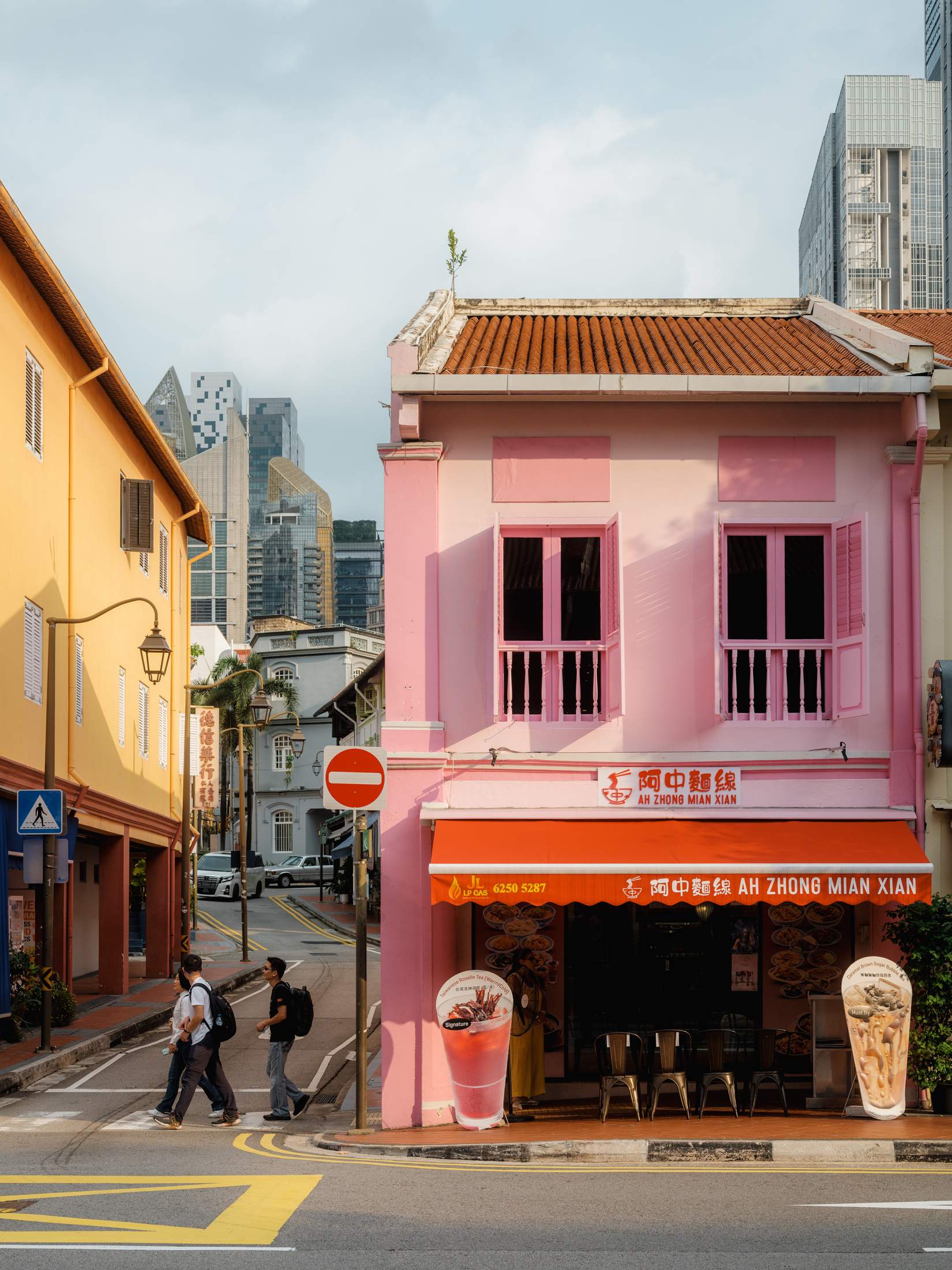

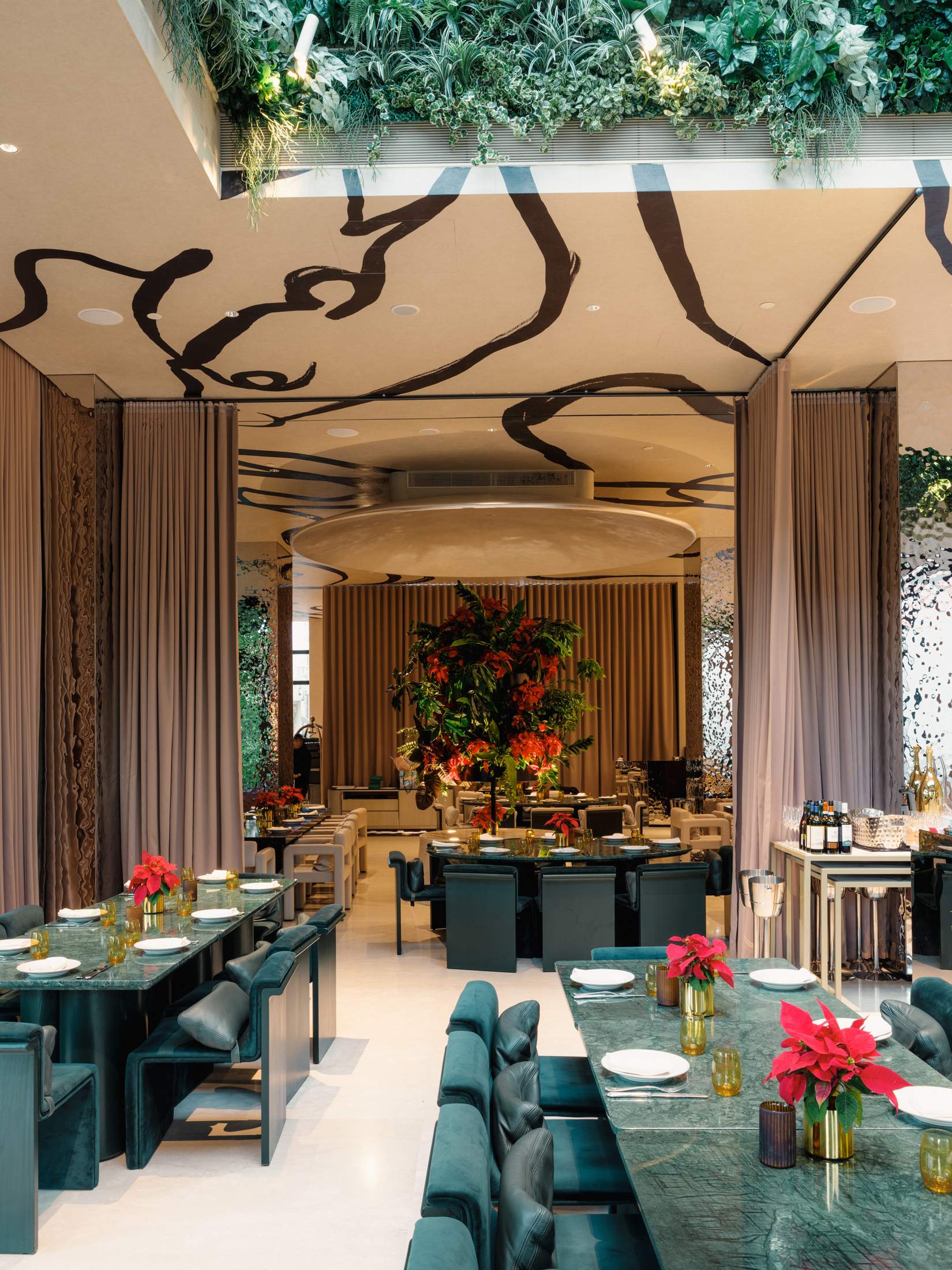
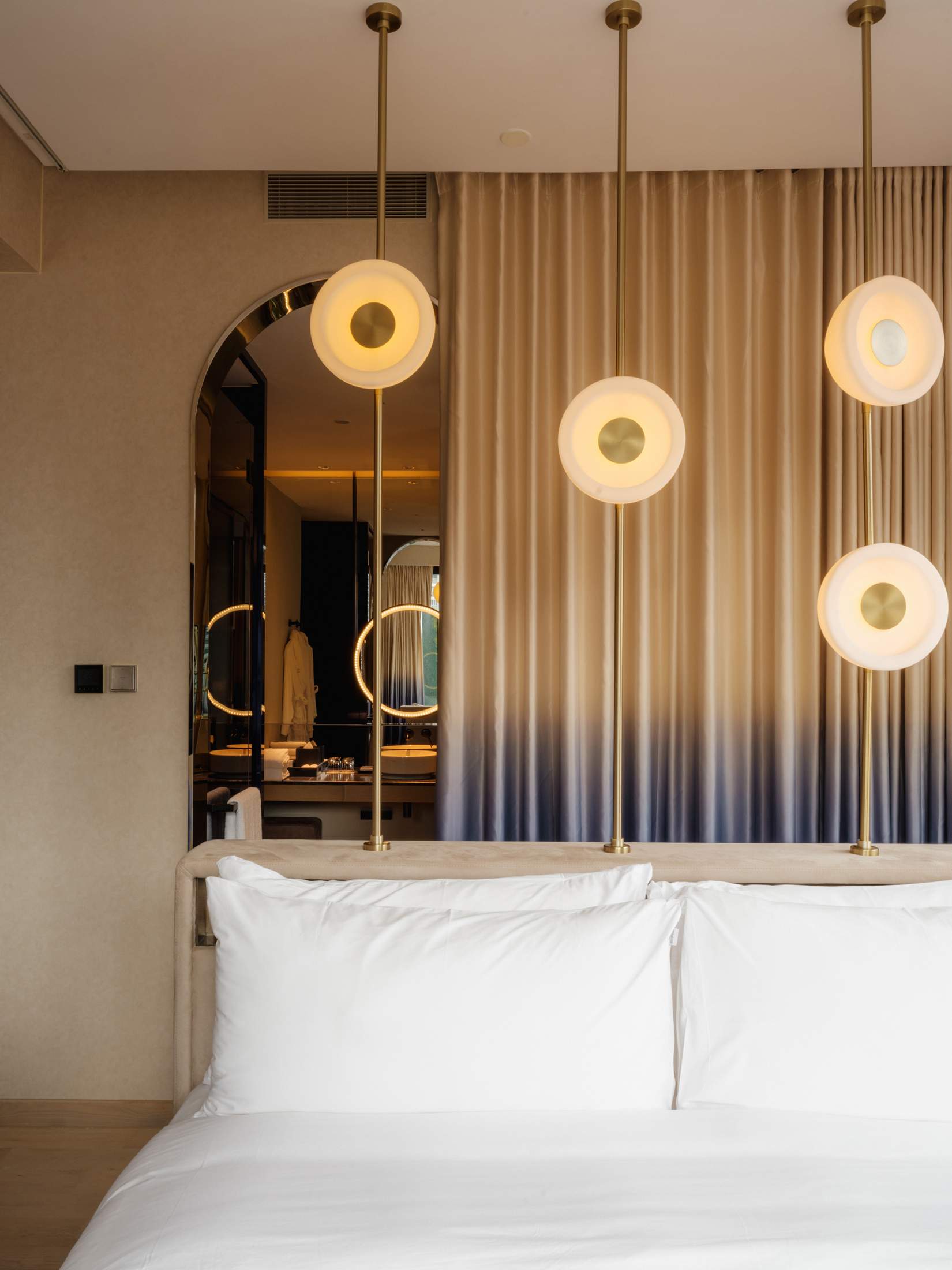

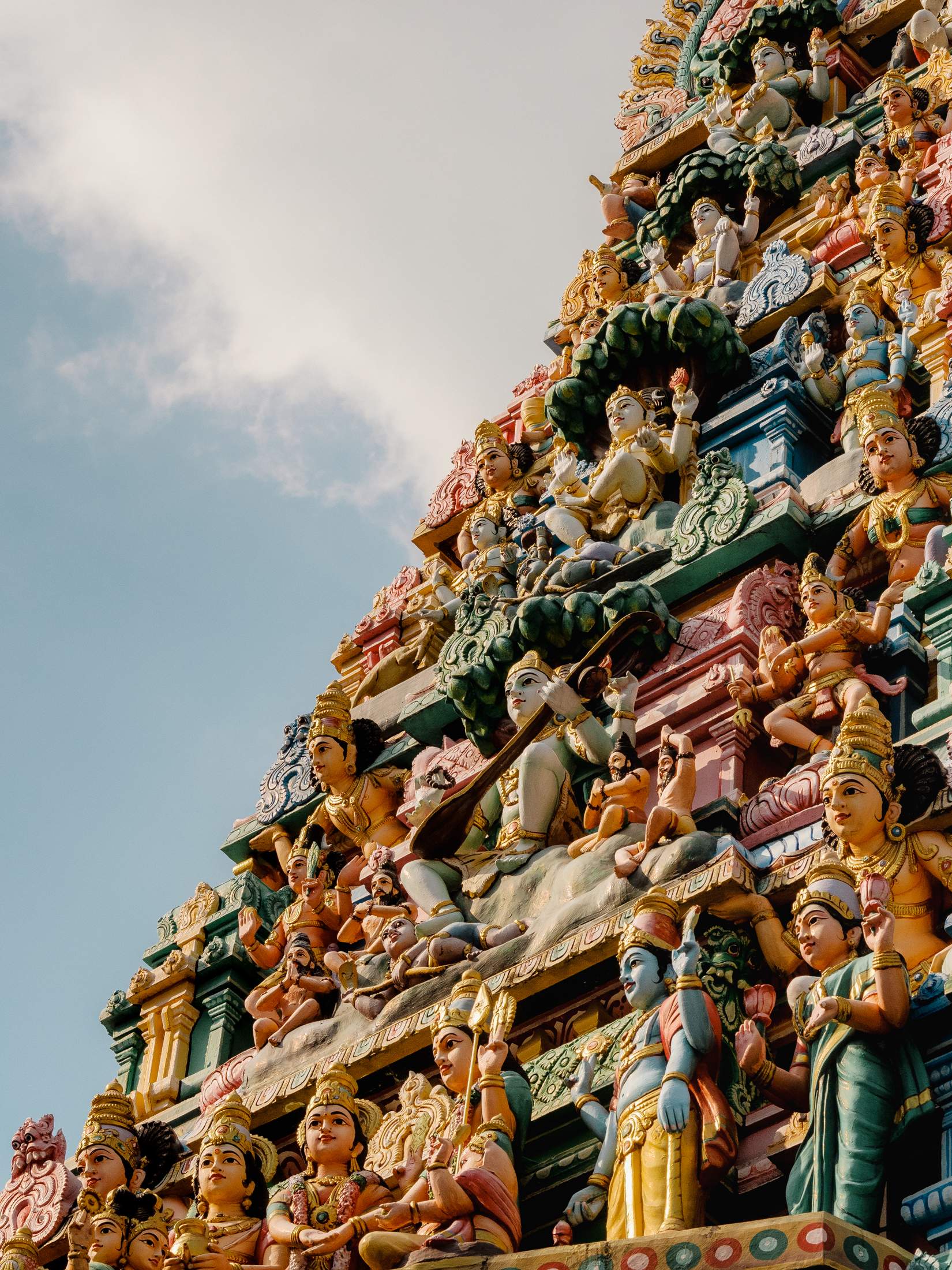
In the evening, I went down to the third floor for dinner at Bottega di Carna, an Italian restaurant where the menu is written by Tuscan butcher-chef Dario Cecchini. The Mondrian is known for its emphasis on art and design, and the restaurant is accordingly impressive: a lofty space with calligraphy-ink ceiling murals, delightful angular chairs and a large Tracey Emin piece glowing against one of the walls.
Later in the evening, I returned to the rooftop for one last look at the city skyline. The pool lights were on and the water gleamed enticingly; beyond it, the high-rise buildings sparkled with light and the sky was clear enough so that I could see the moon and even a few stars. I live on the ground floor, so I rarely see Singapore from this vantage; it was a lovely sight.
The next morning, a better person might have made use of the hotel’s well-equipped gym before checking out, especially after such a decadent dinner – but I am not that person. Instead, I enjoyed an early breakfast. The Mondrian has a sensible semi-buffet with a menu of hot dishes. I ordered some scallion noodles with crispy bacon, nori and a fried egg, which went well with the eccentric assortment of foods I gathered at the buffet, of which I will spare you the details. I left the hotel with a fresh sense of the city I lived in and a checklist of places to explore – not to mention a full stomach.
Local authorities
How to get off the beaten track
The best travel tips come when you keep your eyes fixed on the wall – as long as it’s plastered with posters. No coffee-shop stop should miss out the noticeboard that’s thick with thumb tacks pinning postcard-sized ads. Poorly photocopied neighbourhood newsletters filling a newspaper rack? I’ll take three. Nicking flyers tucked under the windscreen wipers of unsuspecting cars isn’t beneath me either.
Once assembled, this cache yields the kinds of tips only gleaned from media that’s geared to locals. Most of us aspire to transcend the tourist stereotype for that platonic ideal of the traveller who blends into their destination. Hoovering up any scraps of paper hyping the latest neighbourhood art exhibit, concert or restaurant two-for-one special is one of the best ways to achieve tourist-to-local nirvana.
This strategy is a variation on the sage advice of Roman Mars, host of design podcast 99% Invisible, to always read a plaque on your historical walking tour – yes, you should always learn which obscure political figure lent their name to the park you’re in. But if you want to know what to do after your day of sightseeing, always read the poster on the telephone pole inside the park.

Even in the age of online marketing, street advertising remains an effective hyperlocal means of publicity. Smartphone users are drowning in information to the point of tuning out the digital flotsam clogging their effort to just check the weather or make a phone call. But if you’re standing at a corner waiting for the light to turn, you can’t help but notice the flyer informing you of the comedy show taking place later that night just around the corner.
I can’t guarantee that heeding a crude poster’s admonitions will lead to a better dose of culture than following some carefully curated newspaper recommendation but I can guarantee that you’re more likely to stumble into a scene you weren’t imagining. In Auckland, a flyer led me on a long train ride out to a festival. Beloved Kiwi reggae band Salmonella Dub was fairly substandard but the journey was worth it for seeing New Zealand’s neo-hippies in full regalia. In the French Caribbean collectivity of Saint Martin, I once sat through a secondary school theatre production dramatising the life of Congolese anti-colonial independence leader Patrice Lumumba. Not exactly Comédie-Française material but more instructive about French overseas identity than a day at the beach.
“Even in the age of online event marketing, street advertising remains an effective hyper-local means of publicity”
It helps, of course, if you can read the local language. My penchant was put to the test on a recent trip to Kyoto when I popped into the neighbourhood onsen. Soaking in the thermal waters blissfully phone-free, I had nothing but time to decipher the wall ads. I don’t read kanji but careful deduction of a poster with an exterior building photo, a simple map and a few dates and numbers printed in English suggested that the café around the corner from our rented machiya was celebrating its first anniversary with live music. Sure enough, my wife and I strolled in the next night for a warm neighbourhood gathering. It was, as they say, a local’s secret.
Why I’ll never abandon ship
In praise of cruises
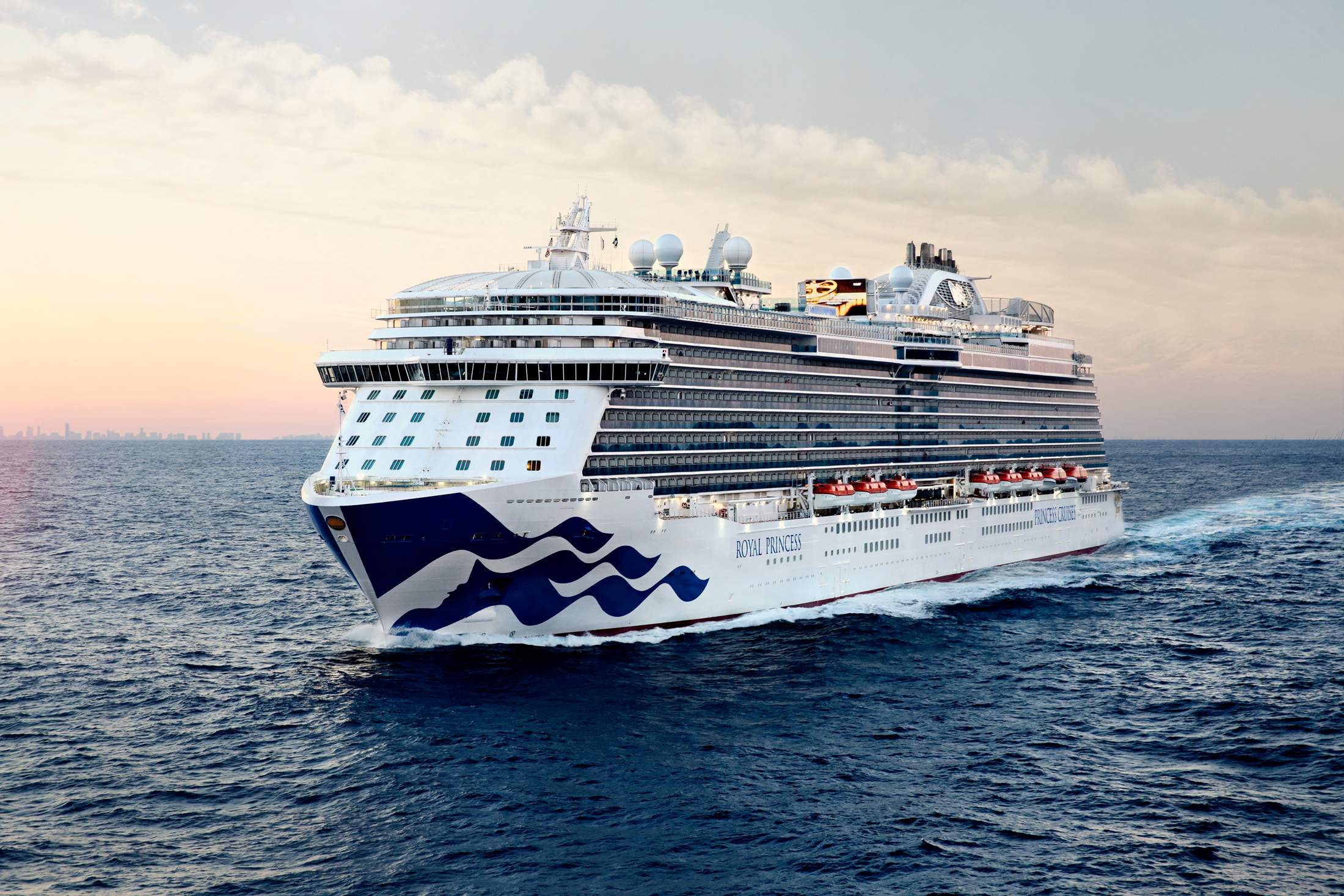
The word “travel” is derived from the French term for work: “travail”. It’s fitting because, though travel can be relaxing once you get to your destination, it can be an ordeal, particularly if you fly.
Even so, many of us still wander to satisfy our curiosity, as a means of escape or for amusement. I’m a compulsive traveller but I detest going anywhere on a plane or a bus and only barely tolerate long car journeys. But put me on a quality train or ship and my vacation’s already on before I’ve moved a mile.
I live in Florida and prefer to spend most of my holidays abroad because, no matter how far I travel stateside, I don’t feel as lost as I would like. As I can’t board a train to anywhere that will give me the dopamine hit that comes from being in unfamiliar environments, cruises are a great way for me to escape without having to endure the indignities of flying: the cramped seats, searches, endless delays, bad food and strangers sitting too close.
I’ve never been on a cruise that didn’t depart and arrive on time. If I don’t like a dish I’m served, I order something else. If I do like it, I still often order something else because indulgence at sea is almost mandatory. Some travellers look down on cruising as shallow and environmentally irresponsible. Others, like the writer Lauren Oyler, go even further. In a recent essay for Harper’s, she insisted that cruises should be illegal. Missing from her 10,000-word critique is evidence that she took the time to meet any of the crew members she’d like to send to the unemployment queue. Contrary to popular belief, there are good cruise lines out there. I recommend the Princess and Celebrity lines if you want a standard of service you’re unlikely to find on land. Hotels barely want to clean your room these days, let alone pamper you the way high-quality cruise lines do. And unless you get invited to the UN General Assembly, you won’t find a more international environment than a cruise ship. For example, on a recent Celebrity cruise, I met crew members from 36 countries, so I didn’t just learn about our ports but many of their home countries too.

“Unless you get invited to the UN General Assembly, you won’t find a more international environment than that of a cruise ship”
I’m currently researching eight Caribbean islands I’ll visit on a forthcoming cruise. I won’t have time to see these places thoroughly but I can always return to the ones that grab me. I also have two teenagers and they relish the freedom of roaming the ship on their own and hanging out in the teen clubs.
Princess, Celebrity and other high-end cruise lines are also investing millions to become more environmentally responsible. For example, 85 per cent of the waste used on Celebrity ships is recycled, repurposed or sent to a waste-to-energy facility.
According to a recent State of the Cruise Industry poll, 85 per cent of people who go on a cruise return for more. Marcel Proust once said, “A change in the weather is sufficient to recreate the world and ourselves.” I feel the same way on the deck of a gleaming white cruise ship, with the wind in my hair and the prospect of a new port, and a chance to reinvent myself, every day.
Gravy trains
Delight in the dining car
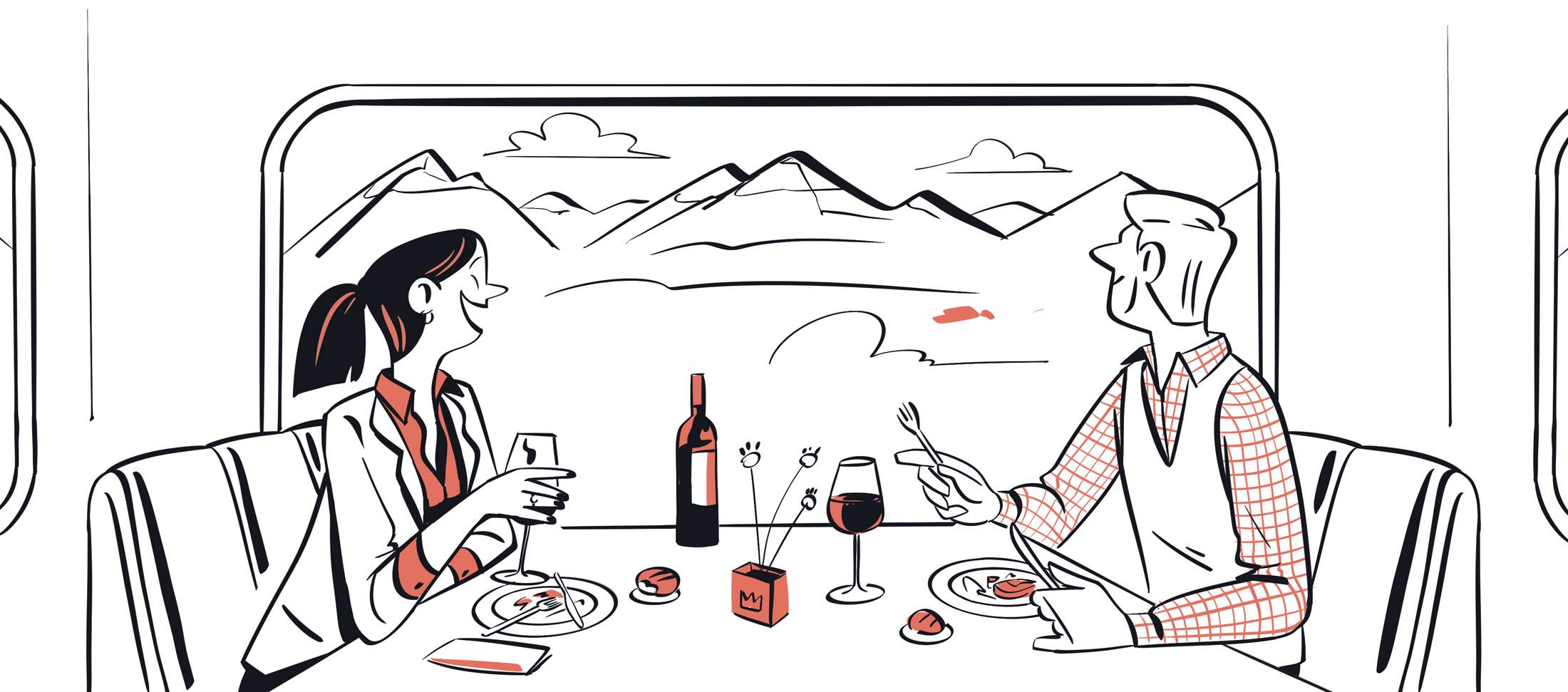
It’s hard to resist the draw of the dining car. At a time when pre-packaged meals and plastic cutlery seem to be the only options when eating on the go, European intercity trains are fighting back with white tablecloths, quality coffee poured into porcelain cups and draught beer in thick glass tankards. Regardless of your seating class, warm service and cooked-to-order dishes remain a timeless part of rail travel.
Railroad diners were first pioneered in the US and then popularised in the UK but it is in Europe that they have now become a staple on the humble commuter train. Whereas these restaurants on rails have largely disappeared elsewhere (either by disuse or because of the coronavirus pandemic), in Europe they have endured as stalwarts of a bygone era – and their value and charm should be cherished and preserved.
When done right, the dining car can whet business travellers’ appetite for rail journeys instead of air travel. Comfort and efficiency, combined with the right service and a well-timed connection, can make all the difference. A work trip from Frankfurt to Milan, or Ljubljana to Vienna, is swift and scenic, while the food menus on these lines are up to scratch too. Travelling directly from one city centre to another allows more time for work or play (instead of waiting for terminal shuttles and security checks). And upon stepping off the train, one feels immediately plugged into the life of a city.
“In this region, culinary traditions transcend national borders, so it’s quite appropriate to try them on the move”
Sit down, relax and munch on bircher muesli as you descend from the snowcapped Alps to blooming Basel on IC 264, or feast on moreish honey-and-walnut cake with the stunning backdrop of the Slovak Tatra Mountains on EC 242 Kosican. Don’t miss out on a crispy schnitzel as you cross from Germany to Czechia on EC 176 Berliner. Have you sampled the revered Kaiserschmarrn sweet pancakes on the Austrian öbb or the warming goulash on the Hungarian máv? In this region, culinary traditions transcend national borders, so it’s quite appropriate to try them on the move.
But it’s not just the food – dining car interiors are wonderfully varied. The Blå Tåget, or Blue Train, which runs between Gothenburg and Stockholm, lives up to its name with navy upholstered banquette seating and interiors reminiscent of those from the 1960s. The menu features crayfish salad and veal meatballs with mashed potato. Then there’s the panoramic dining car on the EC 8 from Zürich to Köln, which has generous windows and circular tables. Here you can order cheese platters accompanied by a delectable wine selection as the mountains roll by. Whichever the line, wherever your destination, there’s no finer way to get from A to B than with a meal and a view.
Generations to come
Pit-stops of the future

Networks of timber structures arching over ultra-fast charging stations for electric vehicles are mushrooming along highways and in cities across Scandinavia. Architecture studio Cobe has already built 11 stations in Denmark with plans to add dozens more across the region. Cobe’s founder and head architect, Dan Stubbergaard, here explains how his studio is reimagining the classic rest stop as a place to recharge EVs (and their drivers too).
“In five year’s time, most people will have an electric car. When Cobe was tasked with designing a concept for future charging stations for the charging point operator Clever, I wanted to create a place for people, not just cars. Those 20 minutes spent recharging your vehicle shouldn’t only consist of buying a Coca-Cola and a hot dog; we wanted to create an environment where you can have a meaningful break. A place to sit on the bench, exercise, watch the kids play football.
We came up with a modular system of tree-like canopies, which adapt to different scales of charging stations. I call them cathedral charging stations because of the feeling of standing under the landscape of canopies.
The key to these canopies is that we can compose them in different ways and adapt them to the local topography. We can create a linear station, a compact station or a ring of chargers with an inner courtyard space.
We try to work with the landscape. The plants and tree species on site are selected in collaboration with the Danish Society for Nature Conservation, with a focus on local trees and plants. For instance, in the autumn drivers can recharge the cars while kids go to pick blueberries. We have many more to build and we’re learning as we go but this project shows how architecture and design can create spaces for meaningful experiences and help us change our behaviour towards a better future.”

Charm offensive
The thrill of the chase
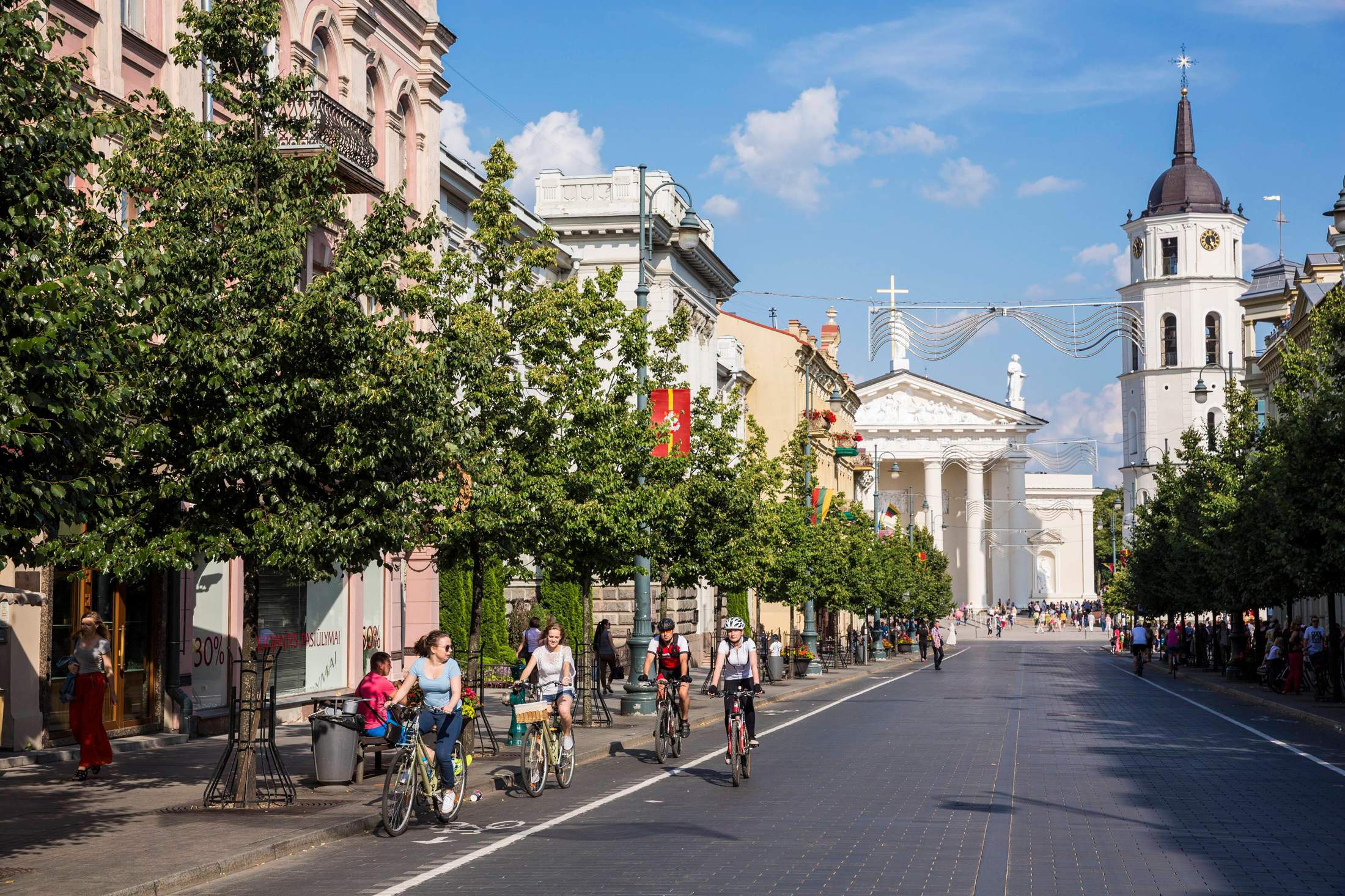
Whereas some parts of Europe are trying to limit visitors due to overtourism, countries in Eastern Europe such as Estonia and Slovenia are staging stunts and running campaigns to attract more travellers. One city that has mastered the art of a risqué tourism push is Vilnius.

In a bid to become famous – or at the very least, less unknown – the capital of
Lithuania ran a bold campaign in 2018, describing Vilnius as, “The G-spot of Europe. Nobody knows where it is but when you find it – it’s amazing.” The campaign ruffled feathers, partly because it directly preceded Pope Francis’s visit to Lithuania. But it worked: visitors to Vilnius increased by 12.5 per cent during the campaign, with a particular upswing in the number of German and British tourists.
As Vilnius marked its 700th anniversary in 2023, the city continued to poke fun at its knack for flying under the radar with a retro 1980s-style infomercial about belated birthday cards: “It’s not that I didn’t remember, it’s just that I didn’t know you existed.”
Just add water
Airports’ hydration stations
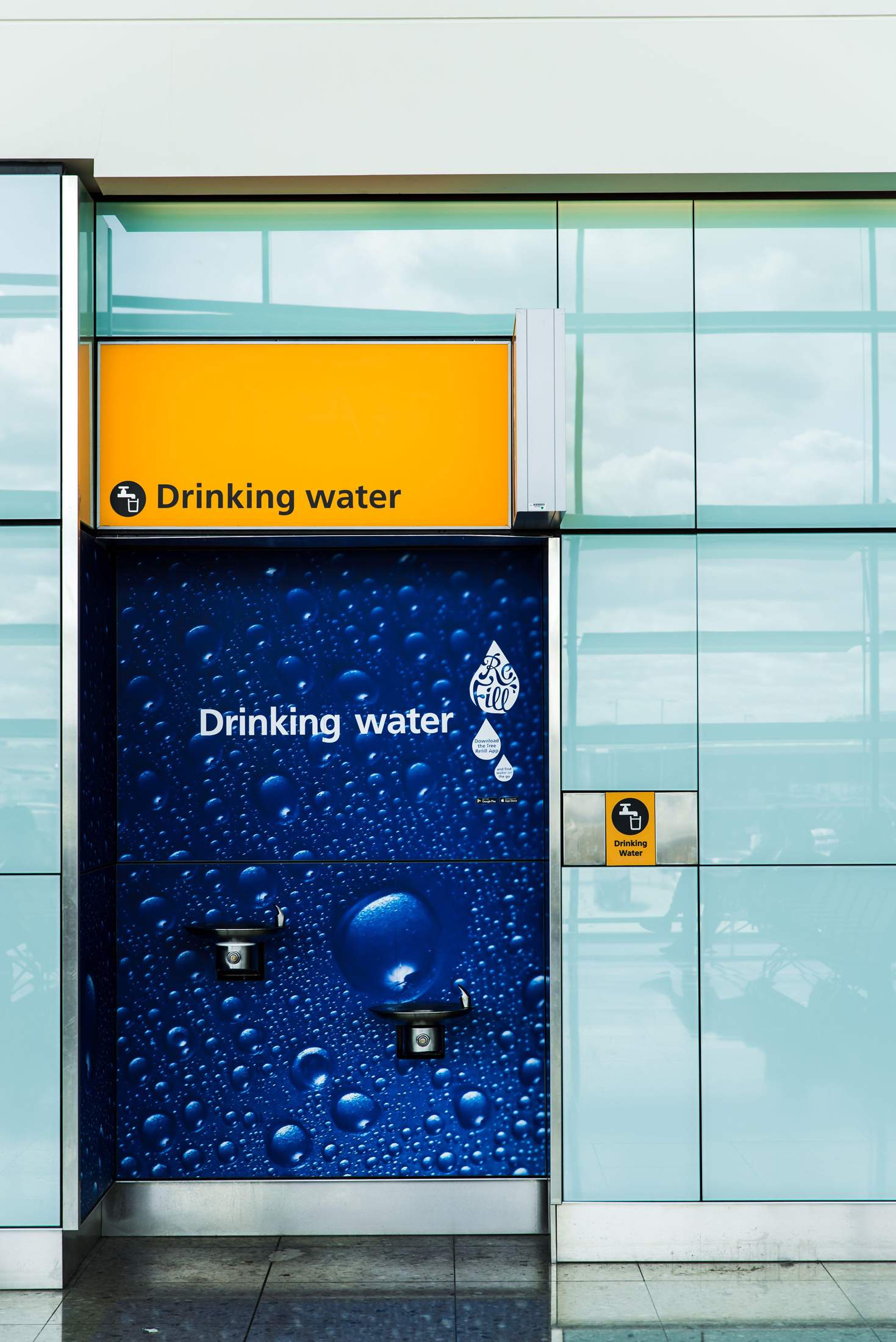
In an attempt to reduce single-use plastic, airports worldwide are getting better at providing water stations for passengers to refill their own bottles instead of paying for an overpriced litre in the departure lounge. Environmentally conscious EU officials passing through Brussels Airport can top up at a large multi-tap kiosk, while Geneva Airport boasts that its handsome water fountains dispense l’eau de Genève.
Some airports are banning the sale of plastic water bottles outright. San Francisco International became the first to do so in 2019, while in 2023 Los Angeles (lax) followed suit. To accommodate this change, lax installed 60 hydration stations instead. “Eliminating single-use plastic water bottles is the right thing for our airports, our communities and our environment,” said Justin Erbacci, chief executive of Los Angeles World Airports.
Just six years ago, more than half of the UK’s international airports did not have free drinking water fountains. It was a similar story in other parts of the world. Crowdsourced campaigns, such as UK-based Water at Airports, have helped to change that. Some terminals now provide the organisation with maps showing the location of their fountains, turning its website into a handy resource.
Perhaps someday, every airport will have a bar à eau such as the one in the lobby of the Ibis hotel at Paris’s Charles de Gaulle (cdg). It offers free refills of micro- filtered water, with a choice of still, sparkling, semi-sparkling and hot. It’s a nice touch for an airport hotel. And even better if cdg and its counterparts elsewhere do the same for their dehydrated passengers.
Fat of the land
Departure-lounge delicacies
Airport halls can at times feel like endless mazes of fluorescent lights and plastic chairs. But if you know where to look, you can find hidden gems filled with excellent regional delicacies. We’ve rounded up some of the best options worldwide for a pre-flight tipple or some last-minute dinner additions ahead of your homeward journey.
1. Singapore Changi Airport
Layer cake
The Bengawan Solo shop in Changi Airport is a favourite for its confectionery, including lapis surabaya layer cake.
2. Naples International Airport
Pasta
Here you’ll find Italian durum wheat semolina pasta cut with a bronze die in the small city of Gragnano. It makes for a truly authentic Neapolitan souvenir.
3. Barcelona Airport
Ham
Barcelona-born Enrique Tomás brings the best Iberian ham, montego cheese and other Spanish delicacies up to the gate.
4. Rabat-Salé Airport
Traditional cookies
Founded in 1985 by pastry chef Naïma Berrada, Maymana offers a variety of traditional Moroccan sweets and savoury snacks. Pick up an assortment before takeoff.
5. Rome Fiumicino Airport
Porchetta
The chef market at Fiumicino is the place for pre-boarding shopping while getting a taste of the surrounding region’s cured meat, porchetta.
6. Copenhagen Airport
Salmon
A walk through the gates of Copenhagen Airport presents the opportunity to stock up on delightful Scandinavian pantry-fillers such as Fangst grilled salmon from Nordic Gastronomy.
7. Istanbul Airport
Turkish delights
A box of Turkish delights provides a welcome sweet treat at the end of a meal. The Old Bazaar at Istanbul Airport has a wide variety to choose from.
8. Geneva Airport
Wine
The wait for a late flight can be made more enjoyable by having a glass of L’esprit de Genève red by Florian Barthassat in the inviting shop Aelia.
9. Paris Charles-de-Gaulle Airport
Cheese
No trip to France is complete without bringing back some cheese, such as a creamy vacherin au lait cru by renowned fromager Hervé Mons.
10. Munich Airport
Pretzel
A loaf of Bavarian-style pretzel rod from famed bakery Backstube Wünsche makes for a great in-flight snack or a savoury gift to bring home.
Do it yourself
How to charter a private jet

Chartering a private jet can be a confusing process, especially for those who are new to it. With dozens of different business models available, many potential surprise fees and hundreds of operators that might have global coverage or simply specialise in light jets within a very specific region, it can all be a bit of a minefield.
That said, the whole thing can be stress-free and straightforward if you know where to look. Frequent travellers who don’t own their jet will likely opt for subscription services or fractional ownership schemes that entitle them to a certain number of hours in the air. For the more occasional private flyer, however, here are some options.
Call a ‘fixed fleet’ operator
These are something like on-demand private airlines, with their own fleet of jets at the ready. You might find that there’s an operator like this which can act as a go-to. If so, get in touch, outline your requirements and the operator will determine whether it can offer you transport and at what price.
Vistajet is a good place to look first because of its truly global reach. It utilises a fleet of Bombardier Globals so you’ll know exactly what you’ll be getting every time. And if you find that you’re flying more than 25 hours a year and want to level up to a membership, it’s relatively seamless to get set up (and cash in on some benefits and perks).
Find a broker or firm that has access to a trusted network of operators
These can offer more flexibility as they work with a variety of private operators, meaning that there’s a higher likelihood that they’ll have what you need when and where you need it. But it’s important to find the correct firm from the outset – one that works only with high-quality operators and has strict standards for its partners. This can take much of the hassle out of the process. Simply ping your broker and get set up with a flight. Magellan Jets is a reputable company and a good place to start.
Empty legs
If budget is a concern then it can be worth hunting around for “empty leg” offerings. Aircraft often need to position empty from one city to another to pick up a client, so many operators will try to fill those planes, often at a steep discount. The downside? A relatively fixed departure time and city pairing. But if it works out, you’ll fly private at a fraction of the cost. Another issue is the lack of a centralised firm offering global empty legs. There are various websites and mobile apps attempting to make this work, however, and there will no doubt be improvements in the coming years. For starters, check out Jettly and Fly XO.
Days of wine and roses
Finding bliss in Canada’s vineyards
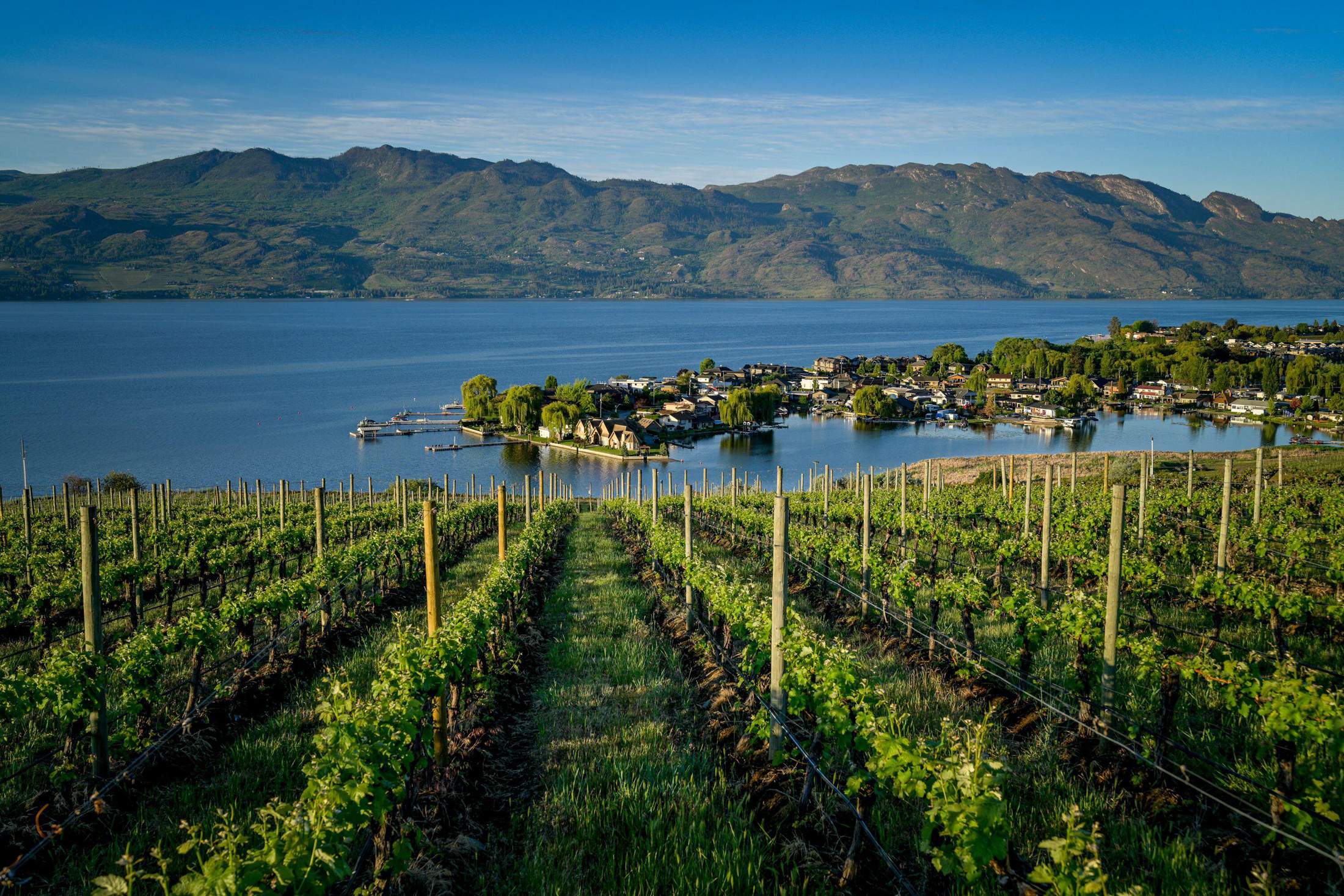
Sitting on a terrace, overlooking the wonder of a 135km-long lake surrounded by rolling hills, while drinking the local wine. That’s how I choose to spend a sweltering summer day in Canada’s Okanagan Valley. Towns in this verdant valley in British Columbia host much of the province’s wine industry, making the region a hotspot for tourists and residents alike.
It’s not the place you would expect to find such an industry due to Canada’s famously harsh winters, but many internationally trained winemakers make excellent use of the 4,400 hectares of lush vineyards in the region. Trips to Okanagan Valley were a mainstay of my childhood while growing up in neighbouring Alberta’s frigid prairies. The wineries, in addition to the warm summers and mild (by Canadian standards) winters, always drew my family back.
As an adult, I became interested in the area for both its natural beauty and its career opportunities. After visiting regularly, I decided to take the leap and ended up calling this valley my home after relocating to the city of Kelowna in 2020.
Moving to Okanagan Valley’s largest city to pursue a teaching career, I found myself becoming enamoured with the area’s wine industry. I loved meeting the talented people running the region’s wineries and it wasn’t long before I was employed in one, while visiting many more and discovering a whole new family in the process. After unearthing what the valley had to offer, I made a change, dove headfirst into the wine business and haven’t regretted it for a minute.
Thanks to new friends and a push from my partner to expand my knowledge of wine, this time of upheaval is something that I will always be grateful for. I might go on other adventures and live elsewhere in my life but I will always return to this truly unique place for everything it has given to me.
High spirits
Cocktails at 35,000 feet
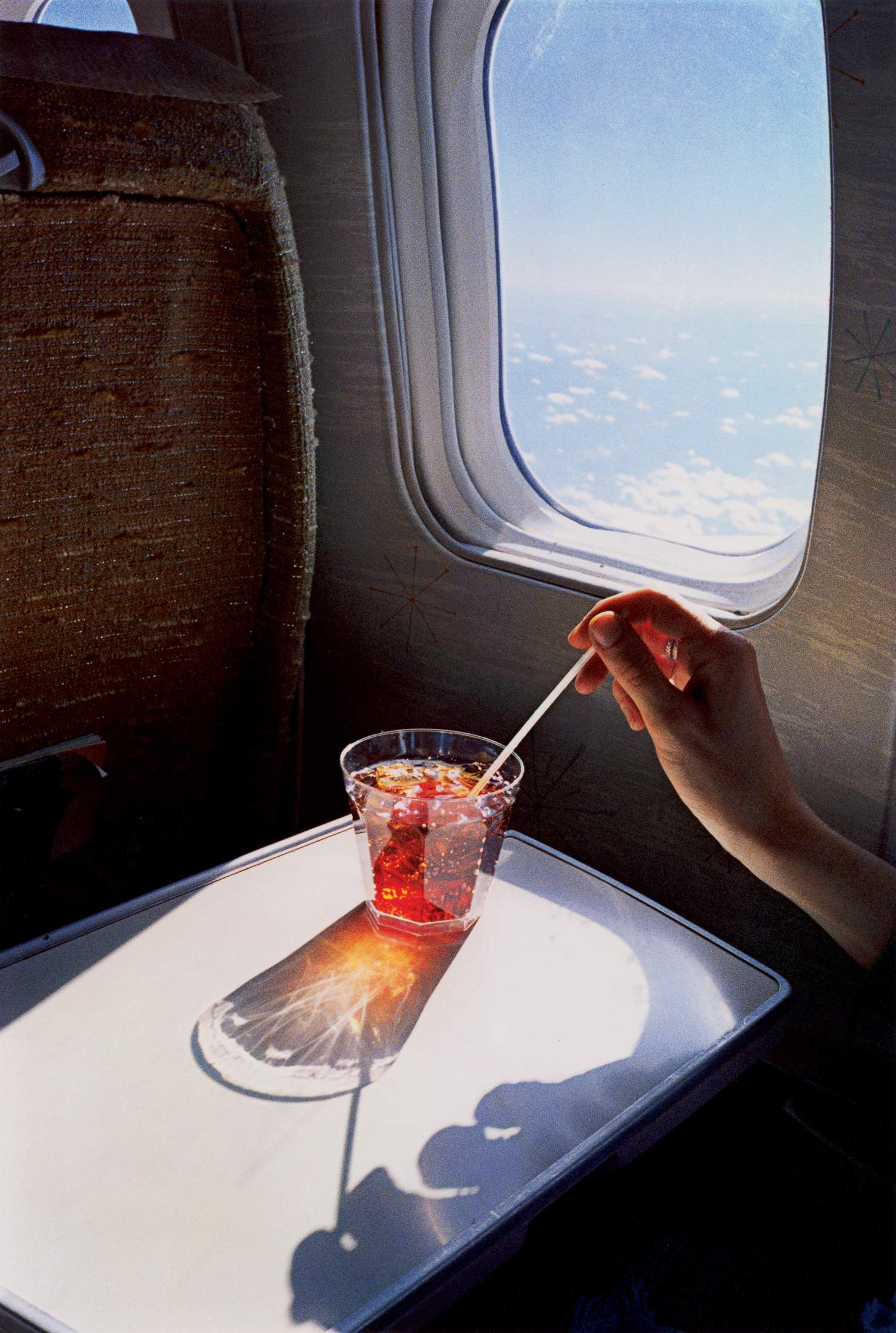
After the inevitable rush to the airport, the interminable queuing to get through security and border control, then finally the boarding process, there is nothing quite like an elevated night-time cocktail (writes Sorrel Moseley-Williams). When flying, I relish the introspective state that the passenger cabin’s anonymity affords and savour the lack of social or business interactions. I forgo any anxious attempt to get online.
“I relish the introspective state that the passenger cabin’s anonymity affords and savour the lack of social or business interactions”
A gin and tonic truly freshens up my travel-weary palate, with its effervescence that adds a little more vigour. A decent and zesty juniper-based spirit dampens the indignity of an economy-class meal. Throw on a pair of noise-cancelling headphones and I feel as though I might have been upgraded.
Mixed blessings
With the world’s finest cocktail makers taking their craft to the skies, the days of cobbling together a bloody mary with mini cans and plastic cups are behind us. Here are the airlines that do it best:
1. Japan Airlines
jal’s drinks list was concocted by Shingo Gokan, the mixing maestro behind Tokyo’s SG Club. It includes riffs on classics such as the Roku gin martini.
2. Qantas
The team from award-winning Sydney bar Maybe Sammy celebrate Australian ingredients in an aromatic eucalyptus gimlet served in Qantas’s First Class cabin.
3. Norwegian
The Nordic airline’s Oslo mule is a riff on the classic, with ginger boosted by sage, which comes ready to drink in a can. It’s a swift remedy for making those air miles pass by a little faster.
4. British Airways
If you’re on a reopened Club World line, try a cocktail from London’s Mr Lyan bar, accented with herbs or absinthe.
My choice for a more potent concoction is the hanky panky. As I savour the aromatic cocktail in close proximity to the clouds, I feel like I’ve been transported back in time and could be at The Savoy in London, with Ada Coleman serving up her creation of gin, sweet vermouth and Fernet-Branca.
Relaxing over a well-made drink is an art form in itself. It’s a moment of indulgence that demands a pause to be taken. Without any distractions, sipping on a high-altitude cocktail brings instant pleasure no matter the class of seat that you’re sitting in.


